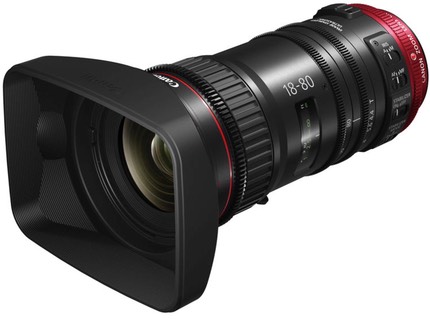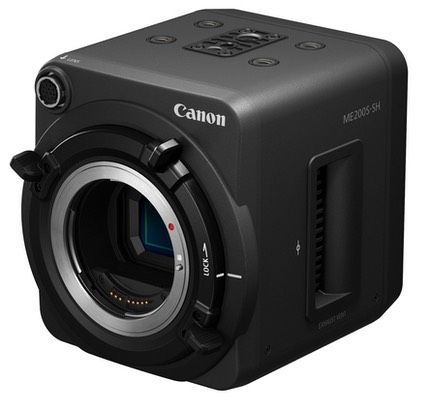April 13th
Canon today announced firmware updates for their video products, a lens, and a camera that we need to discuss, as it represents something that you need to know is coming. As far as I know, Canon doesn’t have any big release or press conference scheduled for the NAB show itself, so these announcements may be all we hear about from them that is new.
First, the firmware updates. The EOS C100 gets the ability to use the new grip joystick functions on the 18-80mm and 17-120mm lenses (iris and zoom), vignetting correction updates, and the ability to selectively disable the microphone. The EOS C300 gets that plus a new Canon Log3 setting, improvements to Canon Log2, plus viewfinder magnification while recording and a new focus guide system. The XC10 adds a new MP4 format (35Mbps), improved autofocus speed, and shutter speed options to reduce flicker. If you’ve got a dedicated Canon XA or XF 3#(#) camcorder, those products also received updates today, as did the G40.

The new lens is the 18-80mm t/4.4 L Compact-Servo (model number CN-E18-80). Canon seems to intend this as a bridge lens for those moving from EOS DSLRs shooting video to the dedicated C series video cameras. The lens has an optional ZSG-C10 grip—the grip the firmware update mentioned above enables—where you can control focus, zoom, and iris, as well as starting and stopping the recording. Retail price of the lens is US$5500, the grip is US$499. As part of the announcement, Canon indicated that they’ll be adding lenses to the Compact-Servo line in the future.
Which brings us to the camera (which can use the lens just mentioned). Canon already had the ME20F-SH. That’s the little US$20,000 box that supports video up to ISO 4,000,000.

Today they announced the ME200S-SH in basically the same form. At only US$5999, this new version doesn’t have the super low light capabilities of the original, but is otherwise similar. It’s a serious video option, with things that broadcasters look at, like Genlock and pretty much full remote control of everything. Canon’s press release suggests, for instance, that the ME200S-SH might be used at the top of a basketball hoop for sports broadcasting (I think they mean behind the glass ;~).
And that’s why I thought that I should mention this camera specifically in my NAB coverage, even though it’s somewhat outside the type of gear that you DSLR users are used to and are putting into your video production kit: the ME cameras represent the future.
The future is this: small, ubiquitous cameras. Basically a box with a sensor in it, with the minimum level of digital additions needed so that it can communicate with, and be controlled from, the outside world. I’ll also be covering the Lytro Cinema camera soon, which is trying to build the 3D world with a single box. But the approach Canon—and I think any intelligent corporation thinking about the future of imaging—will explore is multiple small camera boxes situated at various points in a space.
Imagine your studio having cameras on all walls, and at both the ceiling and floor level in the corners (that’s 12 cameras). Let’s make them 100mp. Let’s sync them so they “fire” together.
Voila. Anything that happens in your studio you now have a 3D representation of. You can pick the angle and the crop after the fact. You can generate Matrix-style “moves” in Apple Photos-like moving stills. Yeah, you’re going to have to change the way you light things, as you can’t have all those light stands in the way of some of the cameras ;~). So your walls, ceiling, and maybe even floor are going to be lighting panels.
That’s the future of photography: multiple cameras/sensors. You’ll notice I reported a bit on this multi-sensor thing in the past. It’s going to come up more and more in the future.
A lot of the video companies demonstrating products here at NAB have some variation on the “small, discrete video camera.” Stick one in an odd place you usually can’t get a camera into. Stick a bunch of them in multiple places to get multiple angles for a broadcast. Make them remote controllable and you only need one person sitting at a switcher to do a multi-camera broadcast.
But we still photographers are going to end up using lots of small boxes with sensors in them, too, I think. Imagine me going to my favorite landscape spot and setting up an array of eight small cameras pointing at my subject, set up at various heights and positions. I press my remote, capture the data on my hip belt, then go home and render the scene in as many pixels as I want from any position I want (within the cameras’ field).
Put another way, “photography” is soon going to be either computational (the camera does all the heavy lifting to put together the image, as in the smartphones) or the work of a database user (you combining the data at your computer in the way you want the “capture” to look).
Absolutely the future, folks.